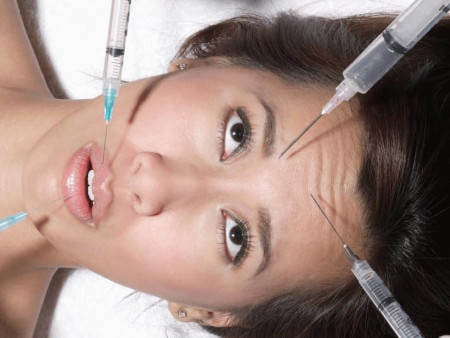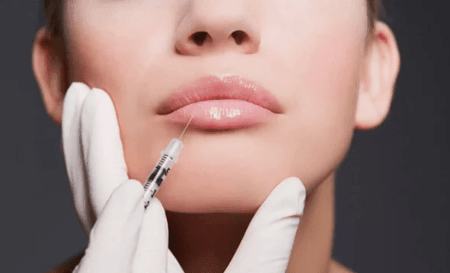Poltava, prospekt Vitaliia Hrytsaienka 9 Weekdays: 8:30-15:00, Weekend: weekend +38 (0532) 56-02-11+38 (095) 688 25 07
Lumps and lumps after lipofilling are normal
 Deficiency of soft tissue and lack of volume is the basis of many aesthetic imperfections on the face and body. Changes due to age, genetic predisposition, trauma are to blame for everything. Modern methods of plastic surgery successfully help patients to regain or maintain youth and attractiveness. One of the most effective and less traumatic rejuvenating procedures is lipofilling, which can be performed both on the face and on the body.
Deficiency of soft tissue and lack of volume is the basis of many aesthetic imperfections on the face and body. Changes due to age, genetic predisposition, trauma are to blame for everything. Modern methods of plastic surgery successfully help patients to regain or maintain youth and attractiveness. One of the most effective and less traumatic rejuvenating procedures is lipofilling, which can be performed both on the face and on the body.
What is this procedure - lipofilling?
At the end of the distant 19th century, a method was invented for correcting the contours and volumes of the face and body using a syringe and the patient's own fat. However, it has been improved only recently and has become a safe and popular way to rejuvenate. A worthy alternative to more radical plastic surgery techniques.
The essence of the procedure is that the patient's fat is pumped out of the areas where its excessive amount (abdomen, thighs, buttocks, knees) is cleaned and transplanted to the corrected locations. And these are all areas on the face (eyelids, lips, cheekbones, forehead, etc.), buttocks, legs, hands, etc. For example, lipofilling of the buttocks and thighs allows you to get seductive shapes without going under the surgeon's knife. At the same time, without the use of implants, fillers, sutures and often under local anesthesia.
Own fat cells (adipocytes) quickly take root, are not rejected as foreign, very rarely cause complications. And since adipose tissue is saturated with a large number of stem cells, there is not only replenishment of the lost volume, but also an improvement in the quality of the skin. The skin is rejuvenated, firm, radiant and healthy. Another bonus of liposculpture is that the donor area is reduced in size. This is especially pronounced with significant movements of adipose tissue.
The nuances of the procedure
The operation is divided into 2 main stages:
- Collection of biological material from the donor area.
- Injection of adipose tissue into the place of correction.
The process of taking fat is carried out using hollow needles with a rounded tip - a cannula. After them, small punctures usually remain, which are simply sealed with a plaster. No scars or stitches. Which contributes to a short recovery period, compared to other plastic influences.
Further, the substance is cleared of anesthetic, blood and other unnecessary fractions. The introduction of the prepared material takes place by injection into the selected area to be filled. Which is carefully marked by the surgeon.
Most often, more fat cells are transplanted than needed. Because a certain part of them will not necessarily take root - about 20-30%. For 2 days, adipocytes are revascularized - they germinate with blood vessels that deliver food and oxygen. Finally, the adipose tissue takes root after 1-2 months.
The procedure can be performed both under local and general anesthesia within 1-3 hours. It depends on the volume of the intervention and the number of lipofilling and liposuction areas.
To whom is plastic shown and prohibited?
Most often, this type of plastic surgery takes place for aesthetic reasons. The reasons why patients turn to the surgeon may be: dissatisfaction with their appearance, age-related changes, congenital or acquired defects.
On the face it is:
- deep grooves, folds and fine wrinkles that appear over time due to thinning of the fatty layer under the epidermis;
- flaws in the relief: “floated” contour of the cheekbones, pronounced nasolacrimal grooves, thin lips, sunken cheeks, asymmetry, drooping eyelids, etc.
On hand it is:
- sagging, wrinkled and dry skin;
- pigmentation. The transplanted fat cells moisturize all skin layers, improve their tone, add volume, which has a positive effect on their shade.
On the body it is:
- indistinctness of forms;
- ptosis of soft tissues;
- decreased skin tone;
- loss of volume.
Although the procedure is considered gentle, however, this is a surgical intervention, which has its own contraindications:
- phase of carrying and feeding the baby;
- diabetes;
- oncological diseases;
- pathology of the heart and blood vessels;
- inflammation and infection;
- dermatological ailments of the correction and donor zones;
- epilepsy.
Modeling the appearance is based on personal wishes and individual characteristics of the patient, excluding contraindications.
Causes of cones after lipofilling
 Immediately after the operation, the patient should be prepared for possible discomfort, swelling, bruising, and sometimes bumps and bumps. Which soon pass on their own. Since the patient's own fat is used, complications in the form of bumps are very rare.
Immediately after the operation, the patient should be prepared for possible discomfort, swelling, bruising, and sometimes bumps and bumps. Which soon pass on their own. Since the patient's own fat is used, complications in the form of bumps are very rare.
The reasons for their appearance:
- Incorrect injection technique of the fatty substance.
- The injection volume is too large.
- Inflammation in the affected area.
- The growth of connective tissue, due to the individual characteristics of the patient's body.
- Accumulation of blood as a result of damage to the capillary.
- The development of a cyst is a container in tissue filled with fluid.
To minimize such risks, it is not enough to find an experienced surgeon who will perform the operation perfectly, you need to follow all postoperative recommendations. For example, wear compression underwear, do not smoke (due to a violation of the process of engraftment of cells), follow a sparing diet. Go for massage and physiotherapy, take prescribed medications (decongestants, antibacterials, etc.)
Methods for removing bumps and bumps after plastic surgery
Most often, seals should gradually dissolve during rehabilitation. If they remain, and at the same time there is soreness, redness or other disturbing symptoms, it is better to go directly to the doctor who performed the operation. No need to self-medicate. After examination, ultrasound diagnostics, analyzes (if necessary), the cause of the bumps will be established and treatment will be prescribed:
- The course of antibiotics is relevant for infections and inflammations.
- The introduction of enzyme preparations, such as "Lidase", "Longidase", to get rid of connective tissue formations.
- Injections of glucocorticosteroids (steroid hormones), such as diprospan. Which are also effective for resorption of granulomas, scars, bumps from connective tissue.
- Hardware techniques - ultrasonic massage and darsonval are indicated in the absence of fibrosis, inflammation, hematomas.
- Re-plastic surgery is necessary if conservative treatment has failed. It allows you to completely remove complex nodes from connective tissue and cysts.
The qualifications of the specialist and the reliability of the clinic are the cornerstones of a successful surgery without complications. The discipline of the patient in following the recommendations after the intervention is also important. At the Plastic and Cosmetic Surgery Clinic, you can safely, effectively and affordably correct your appearance and become young again!
specialists of the Clinic for Plastic Surgery
06-07-2021
Similar news
